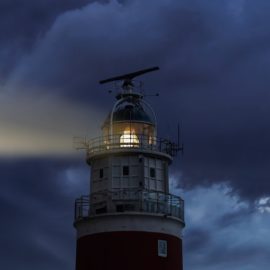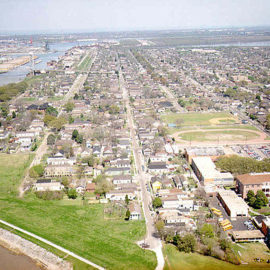
With Pastor Manning in the lead “This little light of mine” became a reality.
Broadmoor and Central City residents could hardly stop cheering Saturday at the unveiling of two new solar-powered neighborhood shelters to use during major failures of commercial electricity, part of a drive to open 86 such safe havens — one within a 15-minute walk of every address in New Orleans. The latest resiliency hubs are at Broadmoor Community Church and Bethlehem Lutheran Church, courtesy of the Community Lighthouse project. They have charging stations, can accommodate light medical equipment and may serve as sites for food distribution in prolonged emergencies. Plus, they give residents a place to rest and warm up or cool off, depending on their needs and the time of year when commercial power fails in their neighborhoods. “We’re proud to have this project be the single largest community-funded project in the nation for solar-related projects,” said U.S. Rep. Troy Carter, D-New Orleans. “In New Orleans we’re used to being first in the places we don’t want to be, so this is one we’re proud to be the first in.”
nola.com
Together New Orleans was the lead of 54 other groups.
Community Lighthouse is an initiative of Together New Orleans, a coalition of 54 faith- and community-based organizations aiming to address issues ranging from access to healthy food to criminal justice reform. Organizers say they will have two more resiliency hubs up and running over the next three months, for a total of 16 by the peak of the 2023 hurricane season. “As these hurricanes and other events each year put us in the dark, we will begin the process of making sure everyone has somewhere to see the light,” City Council President JP Morrell said. Many remember the post-Hurricane Ida landscape in New Orleans, where much of the city lost Entergy electricity service for a week. The news “lighthouses” use solar panels to generate electricity for the building and to charge backup batteries, for when the sun isn’t shining for a long period of commercial power failure.
Using batteries, the sites can send energy back into the grid.
At Broadmoor Community Church, the fully charged batteries can hold up to 7,500 watts, which can power the church for 17 hours, including air conditioning, seven deep freezers and two refrigerators. When they’re not being used for emergencies, the solar panels harvest more energy than the building needs. So the lighthouses also can send some energy back to the grid during the day. Both churches have disaster relief teams for bad weather. One member of the Broadmoor team, Steven Henry, joined the church just four months ago. But as someone with seven years of disaster relief experience through American Red Cross, he thought it only natural to give back to his community this way. “During Hurricane Ida, I stayed here. I know what it was like, and I know what it’s like to reach out to your neighbors,” Henry said. “Following major storms, especially for those who are our most vulnerable residents … our goal will be to reach out to them within 24 hours of a power outage.”
This is an effort that required donations.
The first 16 lighthouses are primarily funded through three major investments made in 2022: A $1 million donation from the Greater New Orleans Foundation, $2 million from municipal government, via the Wisner Grant and federal American Rescue Plan Act. and $3.8 million set aside by Carter in federal law. So far, most of the buildings being used as lighthouses are churches.
Hurricane Ida showed the need for this program.



